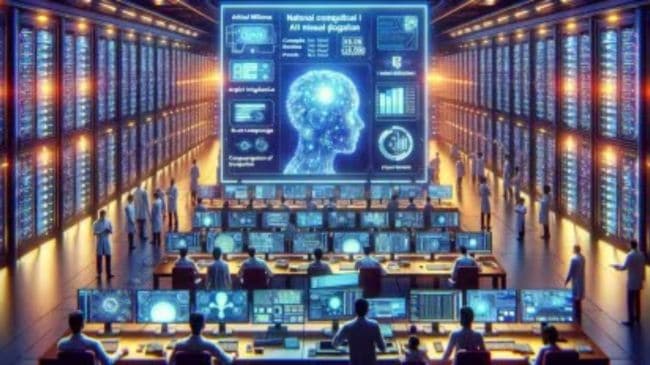Neural Networks for Autonomous Vehicles
Autonomous vehicles are revolutionizing transportation as we know it. These self-driving cars rely on advanced technologies to navigate, perceive their surroundings, and make decisions, including the use of neural networks. Neural networks play a crucial role in the development and operation of autonomous vehicles, enabling them to analyze vast amounts of data in real-time and make informed decisions. In this article, we will explore the application of neural networks in autonomous vehicles and dive into the various aspects of their functionality.
What are Neural Networks?
Neural networks, inspired by the human brain, are a type of artificial intelligence that involves interconnected nodes or “neurons.” These networks can learn from data, identify patterns, and make predictions or classifications. They consist of layers of interconnected neurons, each performing mathematical operations on the input it receives and passing the result onto the next layer.
The Role of Neural Networks in Autonomous Vehicles
Neural networks are the backbone of autonomous vehicles’ decision-making process. They enable the vehicles to analyze a wide array of data inputs, such as sensor data, camera images, and LIDAR scans, in real-time to understand their environment and make decisions accordingly. These networks excel at tasks like object detection, recognition, and tracking, allowing the vehicle to detect and respond to obstacles, traffic signs, pedestrians, and other vehicles on the road.
Object Detection and Recognition
One of the primary applications of neural networks in autonomous vehicles is object detection and recognition. Neural networks can be trained to identify and classify different objects in the vehicle’s surroundings, such as other vehicles, pedestrians, road signs, and traffic lights. This information is vital for the vehicle to navigate safely and make appropriate decisions, like changing lanes, stopping at intersections, or yielding to pedestrians.
Deep Learning for Perception
Deep learning, a subset of neural networks, plays a crucial role in perception tasks for autonomous vehicles. Deep neural networks (DNNs) are designed to handle complex and large-scale datasets, allowing the vehicle to perceive its environment accurately. These networks can process information from various sensors, such as cameras, radar, and LIDAR, and combine it to create a comprehensive understanding of the surroundings.
Path Planning and Decision Making
Another area where neural networks shine in autonomous vehicles is path planning and decision making. These networks use the data gathered from sensors and perception systems to generate a safe and efficient trajectory for the vehicle to follow. They take into account factors like road conditions, traffic patterns, and potential obstacles to navigate the vehicle on the optimal path. Neural networks also help in decision making, such as determining when to change lanes, overtake other vehicles, or initiate emergency braking.
Training Neural Networks for Autonomous Vehicles
Training neural networks for autonomous vehicles is a complex and resource-intensive task. It requires large amounts of labeled data representing different driving scenarios and conditions. Engineers use this data to train the neural networks to recognize and respond to various objects, situations, and road conditions. The training process involves optimizing the network’s parameters, adjusting the weights and biases of the neurons, to minimize errors and improve accuracy.
Challenges and Future Developments
Despite the significant advancements in neural networks for autonomous vehicles, there are still several challenges to overcome. One challenge is ensuring the robustness of the network’s decision-making process in complex and dynamic environments. The network must handle unexpected scenarios, such as sudden lane changes or unpredictable pedestrian movements. Additionally, ensuring the safety and reliability of the network’s predictions is of paramount importance.
The future development of neural networks for autonomous vehicles is promising. Advancements in hardware acceleration, such as specialized AI chips, are making it possible to deploy more powerful networks with real-time capabilities. Integration with other technologies like advanced sensors, data fusion techniques, and advanced control systems will further enhance the performance and safety of autonomous vehicles.
Conclusion
Neural networks are a vital component of autonomous vehicles, enabling them to perceive their surroundings, analyze complex data, and make informed decisions. These networks play a crucial role in object detection, recognition, path planning, and decision making. As technology continues to advance, we can expect neural networks to become even more sophisticated, enabling autonomous vehicles to navigate our roads safely and efficiently.
Frequently Asked Questions
1. How do neural networks help autonomous vehicles make decisions?
Neural networks analyze data from sensors and cameras to identify objects, recognize road signs, and track the vehicle’s surroundings. This information helps the vehicle make decisions about its path, speed, and interactions with other objects.
2. Are neural networks used for self-driving cars only?
While neural networks are primarily used in autonomous vehicles, their applications extend to various other fields like image recognition, natural language processing, and medical diagnostics.
3. Can neural networks handle unpredictable scenarios on the road?
Neural networks are trained on vast datasets that include various driving scenarios. While they can handle many unpredictable situations, ongoing research and development aim to enhance their ability to handle complex and dynamic environments.
4. What is the role of deep learning in autonomous vehicles?
Deep learning, a subset of neural networks, is instrumental in perception tasks for autonomous vehicles. It helps process information from multiple sensors, such as cameras and LIDAR, to create a comprehensive understanding of the vehicle’s surroundings.
5. How are neural networks trained for autonomous vehicles?
Training neural networks for autonomous vehicles involves feeding them with vast amounts of labeled data representing different driving scenarios. The networks learn from this data to recognize and respond to various objects, situations, and road conditions.
Neural Networks and the Future of Autonomous Vehicles
In the rapidly evolving world of autonomous vehicles, neural networks are transforming the way these vehicles perceive and navigate the roads. With their ability to process vast amounts of data in real-time and make informed decisions, neural networks are paving the way for safer and more efficient transportation systems. As researchers and engineers continue to refine and optimize these networks, the future of autonomous vehicles looks promising. Embracing neural networks brings us closer to a future where self-driving cars become a common sight on our streets, offering us convenience, safety, and environmental benefits.









Leave a Reply